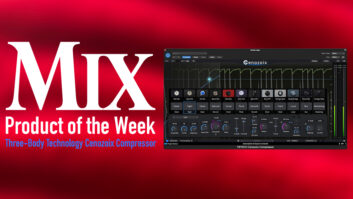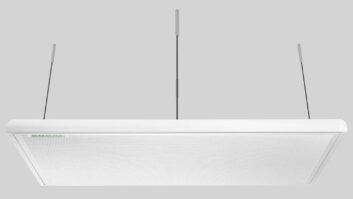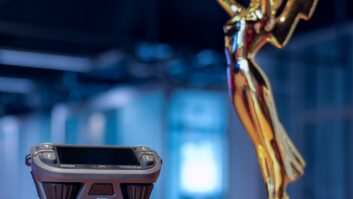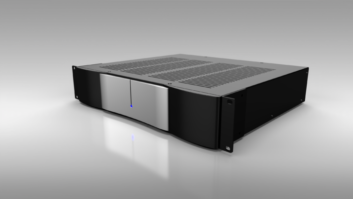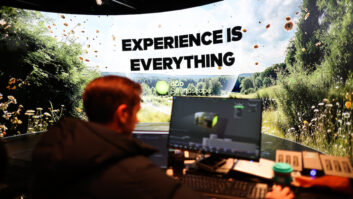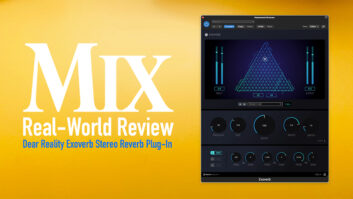Despite so much recent consolidation of pro audio manufacturers-with
big companies being absorbed by bigger ones-some of the most
interesting products still come from small companies. Curtis Technology
is one such manufacturer.
The company’s first microphone design was the AL-1 tube condenser microphone, which has been in production
since 1995. Curtis also builds a solid-state 8-channel mic preamp
called the opre8 and has produced software for a British mixing board
company. But Curtis has done a great deal of work outside the pro audio
field, too. The company has also designed digital computer graphics
hardware, touch screen systems, video arcade games and digital
circuits. Recently, the manufacturer completed a contract to design
cockpit electronics for use in the presidential Air Force one
jetliner.
So, given this company’s wide background in high-tech electronics, I
wondered what sort of digital wizardry might be revealed when the
Curtis AL-2 Stereo Microphone System arrived. As it turns out, the
answer is none-the AL-2 Stereo Microphone System is all good old analog
circuitry and tubes.
DESIGN
The Curtis AL-2 Stereo Microphone System consists of two tube condenser
microphones that connect to a dual-channel power supply in a
single-rackspace chassis. The microphones are about 5.5 inches long and
a little less than 2 inches in diameter. Each microphone has a 2.2cm
gold-free diaphragm, and a handpicked/hand-matched 12AU7 tube that’s
factory-tested for noise, gain and slew rate performance.
The microphones’ aluminum bodies are nicely machined and appear
sturdy, although the microphones are light for their size. Their look
is simple and elegant, and the construction quality is excellent. A
mesh screen covers the forward-facing diaphragm element, and the mics
come installed in swivel shock-mount holders.
An included pair of Canare cables with 4-pin XLRs connect the mics to jacks on the front of the
power supply. Also on the supply’s front panel is a power switch with
an LED power indicator. The back panel has two standard 3-pin XLR
outputs and a ground-lift switch.
Removing the power supply’s top panel reveals four custom-wound
transformers, several unmarked capacitors and some metal film resistors
on a sturdy PC board. In addition, between each channel of microphone
input and power supply output is a cylindrical can that contains a
power transformer. As I expected, there were no active elements visible
in the power supply unit.
IN USE
I first used the Curtis stereo mics to record live bands at two
separate dates in small clubs. I wanted a simple stereo recording of
the band’s stage sound and of the vocals in the P.A. systems. I
positioned the mics on stands about 6 feet above the floor, and each
was about 25 feet from the band at either end of the stage. The outputs
of the power supply unit fed a Panasonic DAT recorder, via a pair of
Avalon mic preamps.
Curtis recommends warming up the AL-2s for at least an hour before
beginning a recording session to allow the tubes and voltages to
stabilize. I did this, and at one hour the mics were warm to the touch,
but not hot.
In this setting, the AL-2s exhibited elongated-cardioid directional
characteristics. However, they were not “beamy” and picked up the
entire stage while rejecting much of the crowd noise coming from behind
them. The mics are well-matched as a stereo pair and yielded an
accurately balanced stereo field with good imaging. They handled the
SPL nicely throughout the evening, even as the band got substantially
louder. Curtis claims a maximum SPL of 125 dB, and by the end of the evening when the band
was really cranking, the Curtis mics showed no sign of breaking up.
Most importantly, the mic’s frequency response did not change between
quiet acoustic songs and full-blown rockers.
Although I expected the AL-2s to exhibit the “warmth” commonly
associated with tube mics, the Curtis mics were quite neutral-sounding.
Electric guitars and vocals were crystal clear, as were the cymbals and
hi-hat. The mics did an exceptional job on the drums, and both the
snare and the toms came through crisp and clear. Keyboards and bass
were also very clear, although the bass didn’t sound as meaty as I
would have liked. However, this may have had more to do with the amplifier backline and stage acoustics than with
the Curtis microphones.
Later, I used the mics on a studio recording of a Martin 12-string
acoustic guitar. one mic was pointed at the guitar’s sound hole at a
distance of about a foot, and the other was pointed at the bridge at a
distance of about 3 feet. The resulting recording was highly detailed,
with no hint of tubbiness. Switching the positions of the microphones
so one was close to the bridge and the other was away from the guitar’s
sound hole yielded a brighter recording that would sit nicely in an
ensemble mix.
For the final test, I recorded both male and female voice talent in
a two-voice dialog setting. I set up the mics back to back and had the
talent read the dialog copy. Though the woman was an experienced voice
artist and could control her plosive “p” and “t” sounds, the man was
not as talented and I had to use a pop filter.
I’m used to working with large-diaphragm tube mics that exhibit some
frequency peaks and proximity effects, and I can often use those to
good advantage with the spoken word. The Curtis AL-2 system
demonstrated no frequency peaks and seemed quite flat. Even its
proximity effect is very subtle. This was a benefit on the woman’s
voice, which came across clear and solid. The male voice required a bit
of low-mid EQ to make his sound more intimate, but his track did not
sound in any way thin.
This system really shines on drum overheads, percussion and acoustic
guitar. Its elongated cardioid pattern does an excellent job of
rejecting sounds from the rear while still covering a wide area in the
front, which is a distinct advantage in a live recording environment.
Curtis Technology sells the AL-2 Stereo Microphone System in the U.S.
at a direct price of $2,995. outside the U.S., the mics are sold
through distributors.
Curtis Technology & Trade, www.curtis-technology.com

